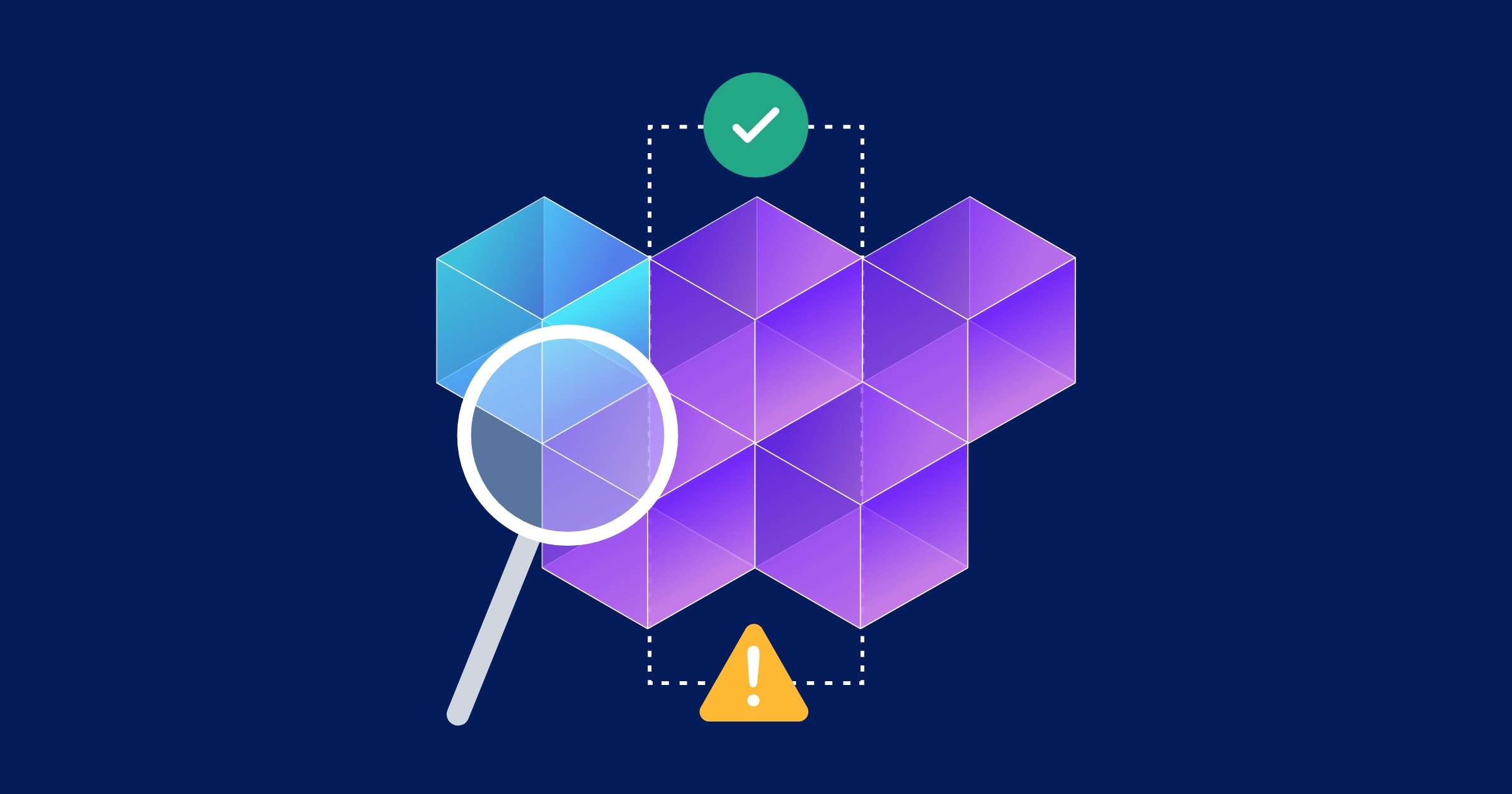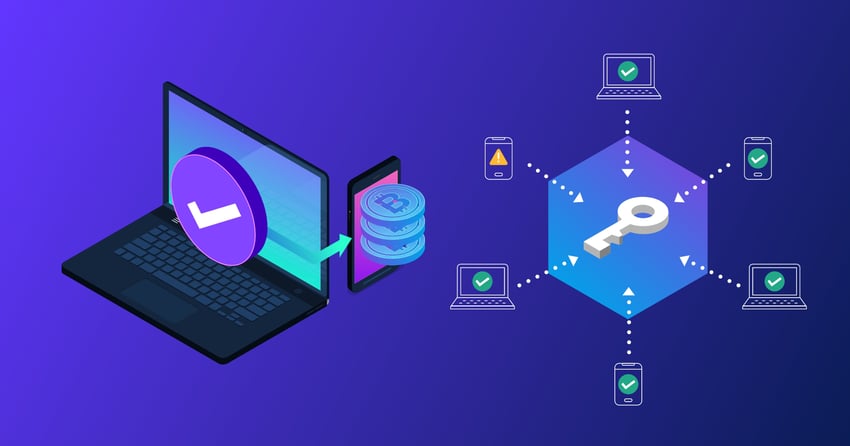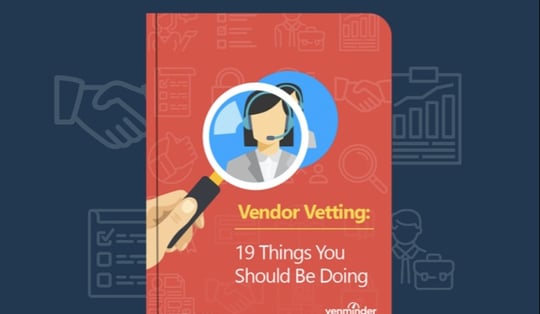
Blockchain technology has been around for more than a decade, but its popularity over the last few years has grown considerably as developers create new use cases for the technology, including software that assists organizations in supply chain management.
In this blog, we’ll look at what blockchain technology is, the benefits of using blockchain, and why you might want to consider implementing blockchain into your supply chain risk management strategies to assist in vetting your vendors and optimizing your due diligence process.
What Is Blockchain Technology?
Often associated with cryptocurrencies, such as bitcoin, blockchain technology is, simply put, a ledger of information that keeps a digital record of transactions. The information stored on the blockchain is often decentralized, meaning that its records are shared across the network of participants. By default, after the information has been recorded on a blockchain, it can’t be edited or changed. Since the information can’t be changed, it reduces the possibility of malicious activity and creates a bond of trust across the chain of information.
Most notably, blockchain has been used to track the transactions associated with digital assets and cryptocurrency, though it may also be used to keep a record of tangible items or services. Overall, it provides peace of mind and creates a sense of trust between participants in the network, while its processes allow for real-time tracking and automation.
Next, let’s take a closer look at the benefits that blockchain can provide for your vendor vetting process.
Why Should You Consider Blockchain in Your Vendor Vetting Process?
As a vendor risk manager, you understand the importance of assessing your vendors and performing accurate due diligence to obtain a full picture of the vendor, their products and services, what you should expect from a business relationship with the vendor, and any risks that may be present.
Blockchain technology can increase supply chain transparency and facilitate automation. By reviewing information permanently recorded onto the blockchain, users can gain insights into previous activities and interactions with fourth parties. Additionally, the use of event-driven programs called smart contracts provides the capability to automatically execute actions triggered by specific transactions being present on the blockchain.
For example, a blockchain transaction may show that a vendor’s supply chain potentially violates your organization’s ESG policy, and can provide input into a smart contract which triggers a due diligence review prior to committing to doing business with the vendor.

6 Benefits of Blockchain Technology in Vendor Vetting
The following are the benefits of blockchain technology when deciding if you want to use it to vet your vendors:
- Real-time tracking allows you to investigate the exchange of services and transactions across the supply chain. Blockchain technology tracks the movement of products and/or services, which improves transparency for your due diligence process.
- Decreased chance of malicious activity ensures that the information you see is trustworthy. The data on blockchain can’t be edited without triggering obvious evidence of an attack, meaning that the information can’t be easily tampered with or compromised, and, because the data is traceable, it can also be verified.
- Blocks are easily assessable to anyone in the network. This may seem like a flaw, but advances in cryptography technology such as secure multi-party computation and homomorphic encryption allow for only specific parties to view unencrypted copies of information recorded on the blockchain. Additionally, a blockchain may be private, meaning that usage may be restricted to participants from only certain organizations or groups.
- Automation decreases chance of human error, as the technology can create smart contracts. Opposed to paper ledgers, these processes leave no room for typos or missed due diligence, as these smart contracts ensure automation as soon as certain conditions are met and can manage the transactions.
- Improved transparency improves trust between organizations. With the rising call for ethical practices across the supply chain, your organization will gain valuable insights into activity and transactions, with greater assurance that the data hasn’t been compromised.
- Cost and time-efficient technology streamlines processes that would otherwise be expensive and tedious. Time and capital saved using blockchain can be used on growing the organization in other ways.
5 Questions to Ask Before Implementing Blockchain Technology
As with any technology, there are challenges to implementing blockchain into your vendor vetting process. When considering whether blockchain is right for your organization, you should ask yourself the following questions:
- Can you digitize all your technology and processes to align with blockchain? Or, does your organization have the ability to utilize blockchain alongside other systems? In both cases, you may find expensive upfront costs incurred because of the change to your processes as well as specialized experience and time that you’re not willing to expend.
- Are your current or potential vendors able to participate? An important consideration is whether there is sufficient participation in a blockchain by your third parties to warrant your own participation. Blockchain adoption is still in its early stages, so you may find that there is not enough participation to harvest cost savings by using blockchain versus your existing due diligence and vendor management processes.
- What are the regulations surrounding blockchain? Because blockchain is new and continues to evolve in its early stages, regulators are still catching up with the best policies to ensure the proper protections and rules are in place. It’s important to understand the current guidelines and any gaps that may be present.
- How much information should be available? While transparency may be a benefit of blockchain, there must be a guide of how much information you should provide without revealing sensitive or confidential information. Ensure that sensitive data is encrypted on-chain and is only visible to authorized entities and individuals. It may be necessary to make use of off-chain information repositories and only record anonymized or encrypted actions performed on that information to maintain compliance with privacy regulations and internal security requirements.
- Is the chain you want to participate in actually secure? It’s easy to assume that blockchain solutions used for supply chain security are secure, but, at the core, the solutions are still software developed by humans . You should perform due diligence on the chain itself the same way you would for another core technology provider. This can include reviewing the results of application security testing as well as examining the development team and anyone else in a position of power within the chain, such as validators, to ensure that there are no known bad actors present. There may also be independent audit reports such as a SOC 2 report available to review, depending on the chain and the governance model employed.
While blockchain technology will be useful for many organizations looking to make their due diligence and vendor vetting process more efficient, the technology is still new and there may be gaps that will need to be identified as more organizations utilize it.
The revolution of blockchain technology offers an automated, traceable, and transparent ledger of information, which may be useful when you are looking to perform due diligence and vendor vetting activities. However, you should also consider any gaps in regulation and the costs associated with integrating blockchain into your established technology and strategies.
Infographic
As part of your vendor due diligence and regardless of risk level, there are 19 things your organization should be doing when vetting all third parties.

Related Posts
Identifying and Assessing Vendor ESG Risk
You may be familiar with the term ESG, which represents the environmental, social, and governance...
Vendor Risk Management and ESG: Should ESG Be Part of Due Diligence?
Everyone is talking about ESG these days, but what exactly is ESG, and what role can it play in...
April 2022 Vendor Management News
Stay up-to-date on the latest vendor management news happening this month. Discover information to...
Subscribe to Venminder
Get expert insights straight to your inbox.
Ready to Get Started?
Schedule a personalized solution demonstration to see if Venminder is a fit for you.









